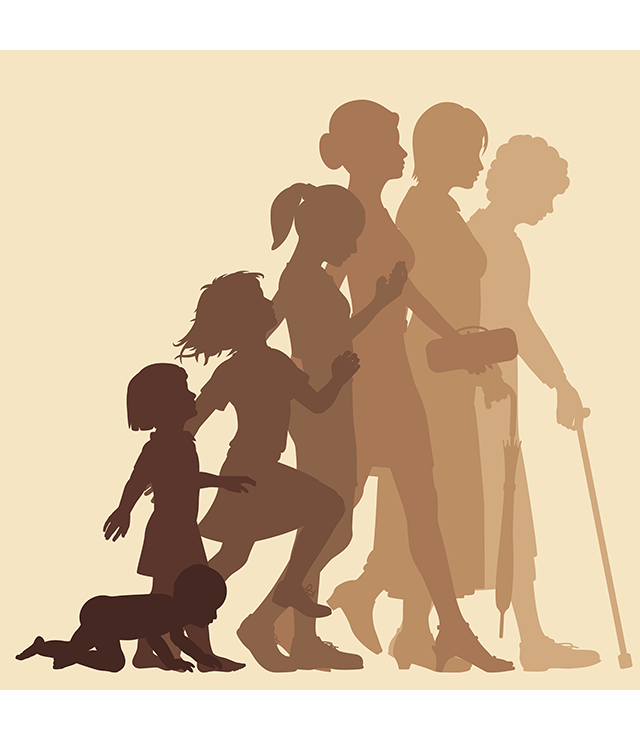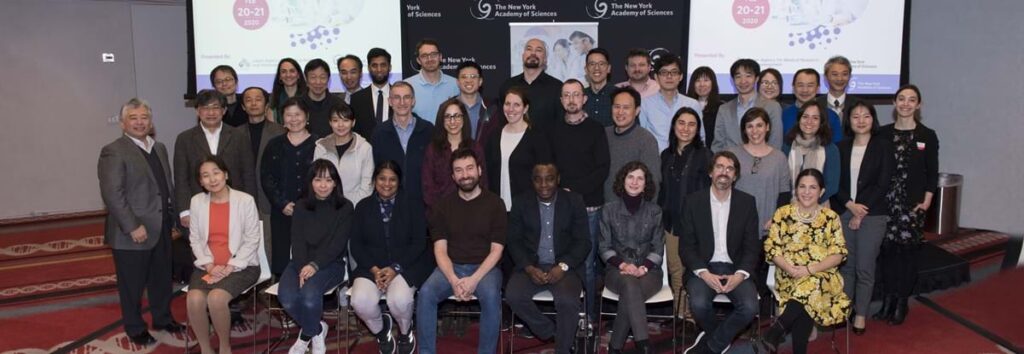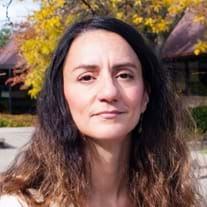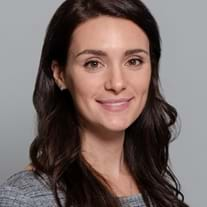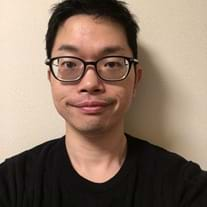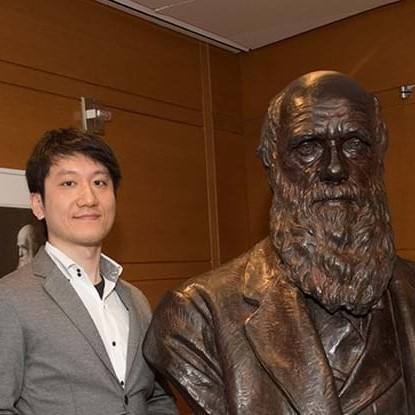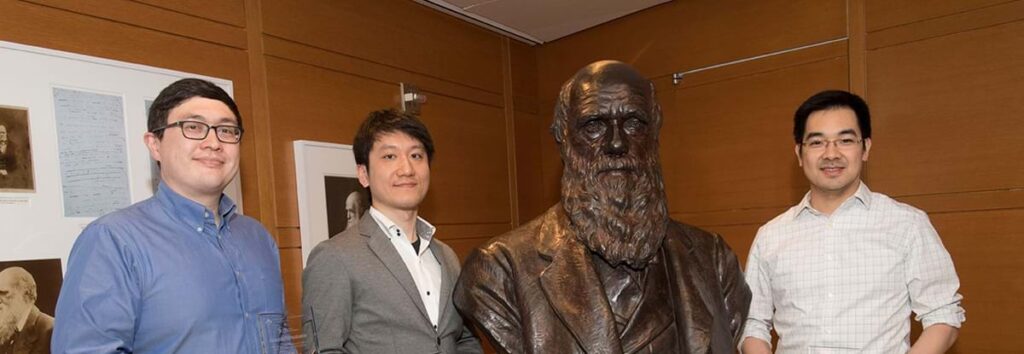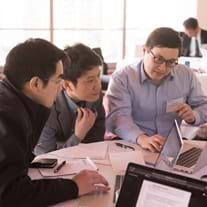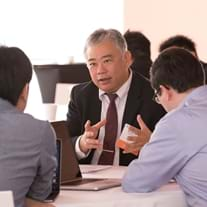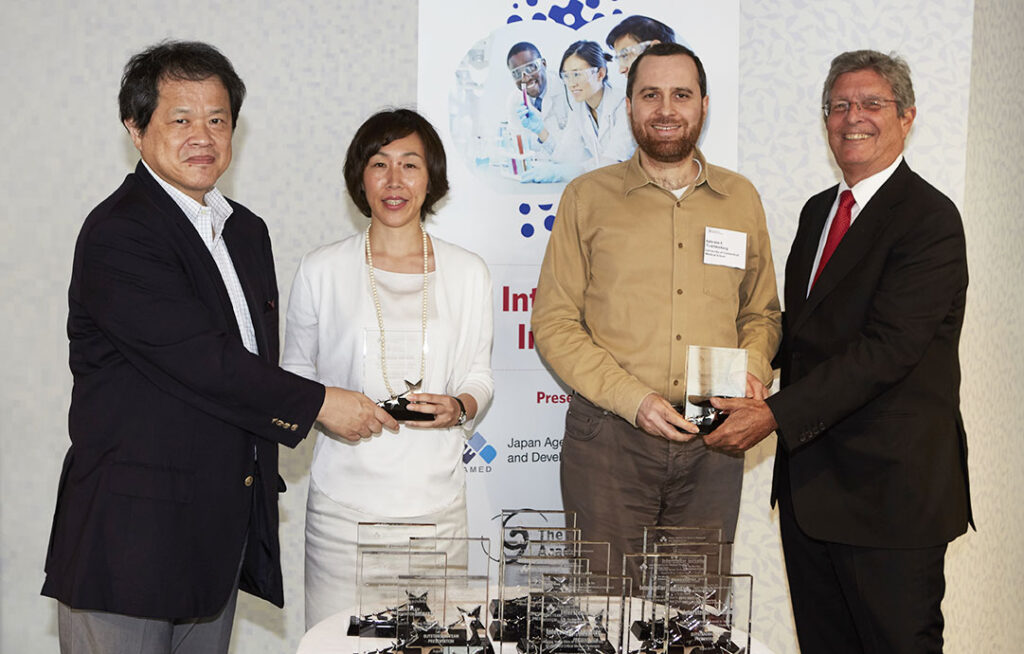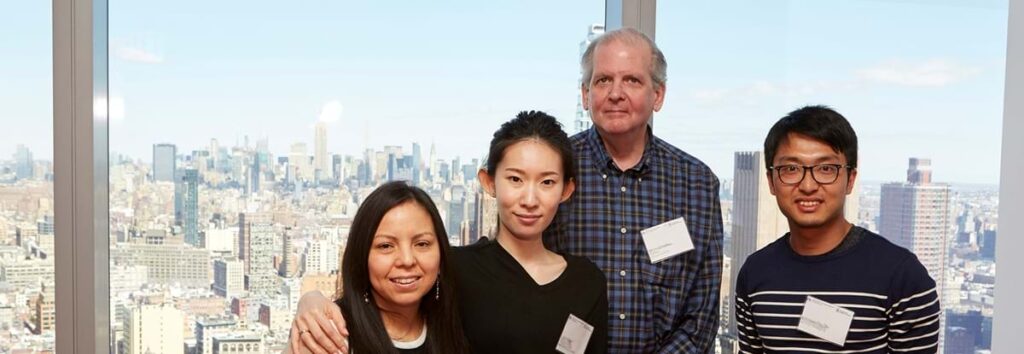
Call for Applications
The Japan Agency for Medical Research and Development (AMED) and The New York Academy of Sciences (NYAS) are inviting applications for the Interstellar Initiative. The Interstellar Initiative aims to increase international and interdisciplinary collaboration uniting scientists within the early stages of their careers and catalyzing scientific advancement. Early Career Investigators (ECIs) worldwide are invited to apply for a competitive application review process. Awardees will be invited to a three-day workshop in New York City where they will engage in in-depth discussions to identify research topics and develop research plans. Working in three-person international teams—formed by NYAS and AMED—participants will receive comprehensive support, including mentorship from distinguished researchers, specialized training, and funding (1.92 million Japanese Yen) to enhance collaboration. This support will help refine their research plans and strengthen their ability to secure future research funding.
The 2025-2026 Interstellar Initiative will address challenges in the area of basic research to elucidate the complex mechanisms of living organisms. Research topics may include biological functions or pathological conditions at all levels of analysis: for example, studies on genes and individual molecules, intracellular networks, intercellular associations in tissues and organs, and networks underlying the complex functions of entire organisms. Translational research topics are discouraged.
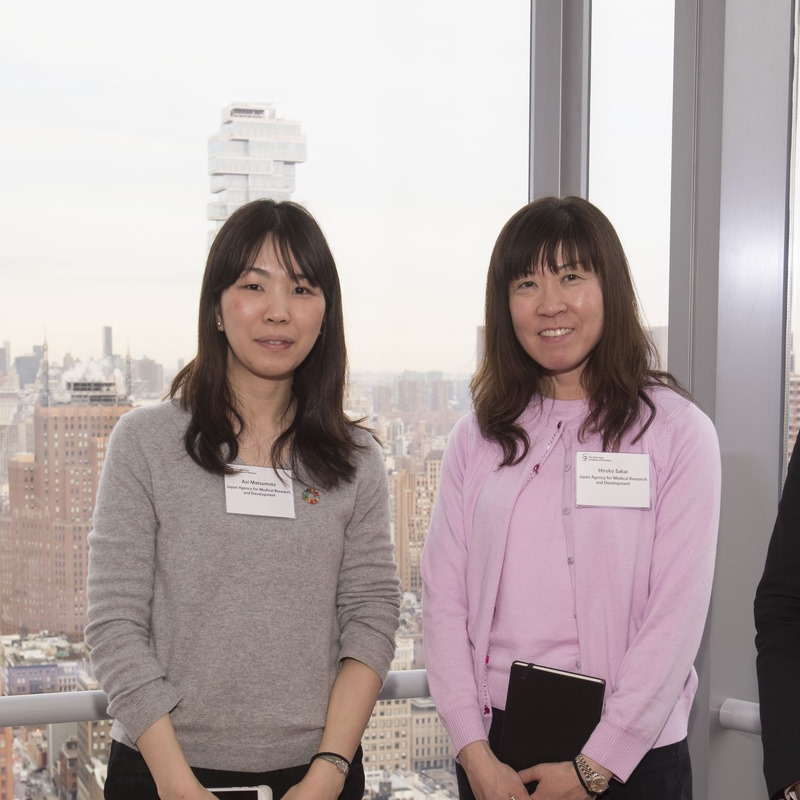
What is the Interstellar Initiative?
Collaboration is key to truly innovative scientific discoveries and advancement. The Interstellar Initiative connects Early Career Investigators (ECIs) with peers, in related but distinct disciplines, under the guidance of mentors who are established scientists at the forefront of their respective academic fields. This is a remarkable opportunity for ECIs to: (i) network with exceptional researchers from around the world; and (ii) build international research collaborations; (iii) receive expert guidance from leading senior scientists on the preparation of a compelling research proposal.
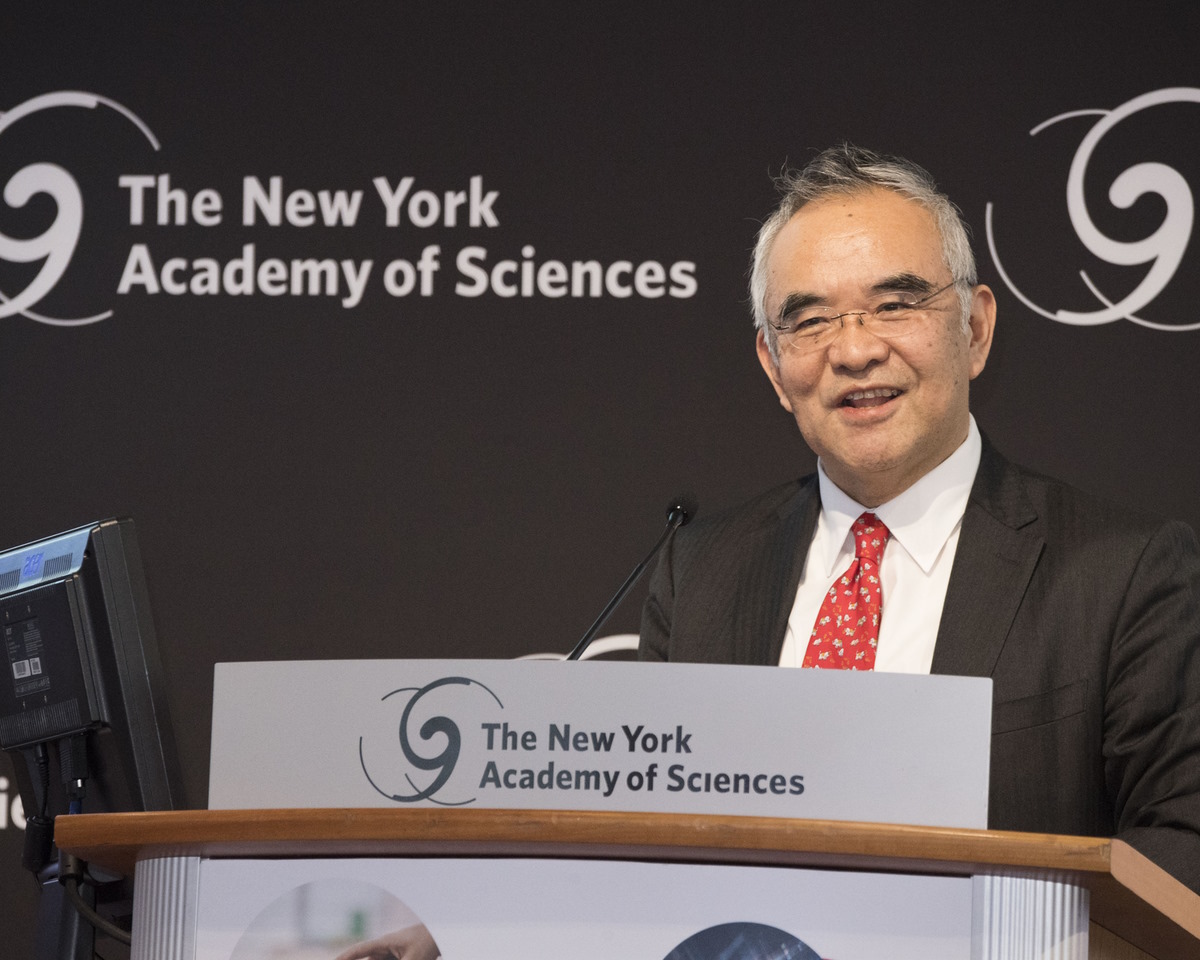
Why Apply for the Interstellar Initiative?
Scientists emerge from the Interstellar Initiative program with: a lifelong network of smart, ambitious peers from across the world, the recognition of being selected for this competitive program, experience working with others from a broad range of scientific disciplines, elevated communication and interpersonal skills gained through cross-cultural collaboration, knowledge of how to develop a stress-tested research proposal that is ready for submission, the gratification of working on a life-improving solution for a basic research challenge.
“International collaboration is critical in many fields. From infectious disease outbreaks to cancer treatment and drug development, we can accomplish much more when we reach out, shake hands, and collaborate.”
—Makoto Suematsu, MD, PhD, Former President of AMED and the Founder of Interstellar Initiative
Presented By


Key Dates
- April 15, 2025: The application period opens 10:00 AM April 15 (JST), 9:00 PM April 14 (EDT).
- May 22, 2025: The application period closes 1:00 PM May 22 (JST) 11:59 PM May 21 (EDT).
- Mid July 2025: Successful applicants will be notified.
- August 2025: Orientation session (virtual) will be held.
- August-September 2025: ECIs will be matched and grouped into teams.
- September 17-19, 2025: Interstellar Initiative workshop will be held in New York City.
- After the workshop: Teams will continue to develop their research proposals with mentorship from senior scientists.
Eligibility
Applications are invited from ECIs who have backgrounds in the following broad categories:
- Biomedical Research
- Life Sciences
- Physical/Natural Sciences
- Biotechnology/Analytical technology (including data/computer science)
To be eligible, an applicant should have the following:
- Hold a doctoral degree or equivalent (PhD, DPhil, MD, DDS, DVM, etc.)
- Have obtained their last doctoral degree within the last 10 years*
- Have been engaged in active research for 10 years or less since obtaining their doctoral degree or equivalent.
- Have ever obtained research grant on their own to carry out their research projects for more than 2 years or hold a tenure-track or equivalent faculty position at a university, private research institution, academic medical center, or national government laboratory
- Be proficient in speaking and writing in English for the purpose of professional science communication.
- Have never participated in the Interstellar Initiative activities/workshops of the previous rounds.
Note: Exceptions to these requirements may be made on a case-by-case basis at the discretion of the organizers. If you have questions about your eligibility, please contact interstellar@nyas.org.
*Extensions to this timeline will be made in certain cases such as a pause for family leave.
Proposal Guidelines
The application includes a request for a short proposal as outlined below. In addition to application to the portal, applicants who belong to Japanese institutions should submit their application to the e-Rad portal (https://www.e-rad.go.jp/en/).
ECIs must prepare a proposal that addresses the following:
Identify a critical research question in basic science, emphasizing its significance and potential impact, and outline a research plan detailing how your expertise can contribute to addressing this question. Include how you would aim to enhance this proposal through your participation in the Interstellar Initiative. Please note that this proposal is a starting point for team matching and idea development and may not be the final project you work on during the initiative.
Proposals may not exceed 1,000 words in length, must be in English, and must address the evaluation criteria outlined below. A supplementary figure may be included but is not required. The proposal should also include a few sentences defining the methodology, why the proposal is unique or different from existing research, and what will be known once there is an answer from the experiments.
Evaluation Criteria
- Clarity: There is a clear, well-defined question. The aims are structured so that they answer a specific question.
- Scope: The extent to which the proposed research question represents a challenge impacting the entire field and not solely the interests of the applicant.
- Quality: The extent to which the proposed research question is defended and the research solution is valid and scientifically rigorous.
- Impact: The extent to which the proposed research solution may influence the field.
- Novelty: The extent to which the proposed research solution challenges existing paradigms and employs new methodologies or concepts.
- Promise: Future prospects in the field and potential for further significant contributions to science.
Selection Process
Up to twenty-four applicants will be selected and grouped into international teams and interdisciplinary teams of three researchers, matched largely based on their areas of interest. Through participation in the workshop, each team is expected to identify a research topic that utilizes the expertise of all team members, and to develop a research proposal with guidance from mentors. All teams will consist of one member who belongs to a Japanese institution (the Principal Investigator) and two from different areas of the world.
Each team will receive a maximum funding of 1.92 million Japanese Yen (direct cost) from AMED, administered through the Principal Investigator’s institution in Japan, to strengthen their proposals. This support can be primarily used for travel to facilitate in-person meetings with team members, but also may be used to acquire reagents and supplies for generating preliminary data if needed. PIs will be responsible for managing the funding for the entire team.
View eligibility and proposal guidelines.
After Selection
Successful applicants will participate in an orientation session (virtual) in August and a three-day workshop in New York City in September 2025. All travel expenses to New York City will be covered.
Teams are carefully matched before the workshop and strongly encouraged to connect virtually ahead of the in-person event. During the New York City workshop, teams meet in person, build connections, and collaboratively identify complementary research areas to develop a joint research concept under the guidance of their mentors. At the end of the workshop, teams present their ideas to the mentors and fellow ECIs for feedback.
Please note that if one of the eligibility requirements is no longer met at any point after selection until the end of March 2025, the successful applicant will be deemed ineligible and withdrawn from the Interstellar Initiative Program.
If a team member cannot be contacted for 14 days, they shall be deemed to have withdrawn from the Interstellar Initiative.
At the end of the program, teams are encouraged to submit their proposals for funding, however this is not mandatory. Examples of agencies targeted by teams include the Human Frontier Science Program (HFSP), the National Research Foundation (NRF) Singapore, the Alzheimer’s Association, The Wellcome Trust (UK) and the Michael J. Fox Foundation, among others.
Travel and Accommodation
Breakfast and lunch will be provided for the duration of the workshop. Eligible participants will receive:
- A 4-night stay at an Academy partner hotel for the September Workshop.
- A $157.50 travel stipend for their transportation to and from airports and train stations for the September Workshop.
- Reimbursement up to the maximum limits outlined below for economy class air travel (or train/car travel) and travel insurance for each workshop.
Airfare, Train fare, or Car Mileage/Parking Maximum Reimbursement Totals (includes travel insurance):
- From the Tri-State Area (outside NYC) to NYC: Up to USD $168.00
- From East Coast USA to NYC: Up to USD $420.00
- From Middle USA to NYC: Up to USD $504.00
- From West Coast USA to NYC: Up to USD $630.00
- From Canada, Central/South America, Europe to NYC: Up to USD $924.00
- From Africa, Asia, Africa, Australia, Middle East to NYC: Up to USD $1,932.00
- From Japan: Up to USD $1,932.00
Please note that according to the Academy’s travel policy, participation in this workshop does not include travel reimbursements or accommodation for individuals who are local to metro New York City.
“In this stimulating environment, projects transformed, matured, and perfected right in front of our eyes. Everyone gained something from this eye-opening experience, including ideas, partnerships, and new collaborators.”
—Li Li, MD, Director of Laboratory of Translational Cancer Research and an Associate Director of Laboratory of Cellular Immunology, Ochsner Clinic Foundation
Finding a Common Thread
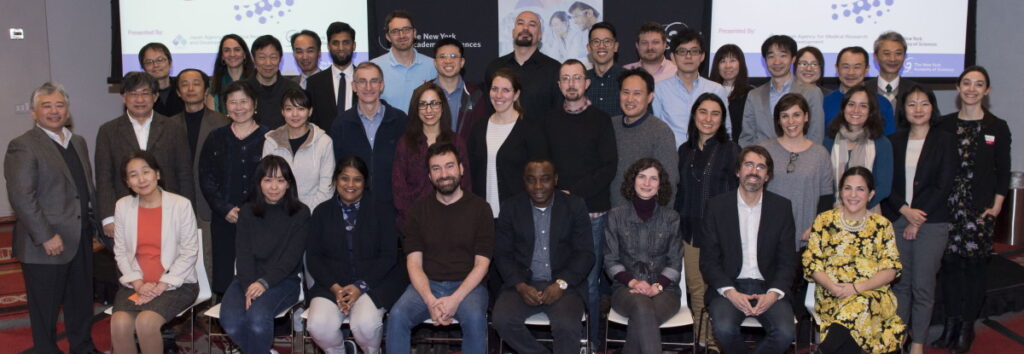
When mechanical engineer Carlotta Mummolo, PhD, neurobiologist Eleni Gourgou, PhD, and neuroscientist Teppei Matsui, PhD, teamed up in the Interstellar Initiative, their first task was finding common ground. “We have such diverse backgrounds that I initially joked we were speaking different languages,” Mummolo said in a group interview.
Mummolo, from the New Jersey Institute of Technology, is a roboticist who works with humans. Matsui, from the University of Tokyo, uses rodents to study brain imaging. Gourgou, from the University of Michigan, studies roundworms. How could they possibly tap their diverse expertise to find a research question in healthy aging, the focus of the 2019/2020 Interstellar Initiative?
“We tried to find a common thread that allows us to use three different organisms as three different approaches to address the same target, Gourgou said. “That thread turned out to be locomotion and cognition.” Mummolo added, “this is the novelty of our project, because assessments of motor and cognitive performance are usually done separately. But we wanted to integrate them and look for a methodology that translates across species.”
The team said their research project was aided by mentors, who offered good advice to make their project as appealing as possible to grant reviewers. “One of our mentors told us something that I’ve kept in mind throughout this project,” Mummolo said. “She told us to focus on integration, innovation, and impact. That was very helpful.”
Matsui explained why he thought the global collaboration at the heart of the Interstellar Initiative was especially valuable for research in the life sciences. “Biology is becoming a ‘big science’ these days, and it is necessary to form a big team of experts to do cutting-edge science,” he said. “For small countries like Japan, it can be difficult to find experts within the country.”
Matsui also had a good final word in the discussion: “I’d encourage young scientists to apply for the Interstellar Initiative.”
Coming up with a New Approach
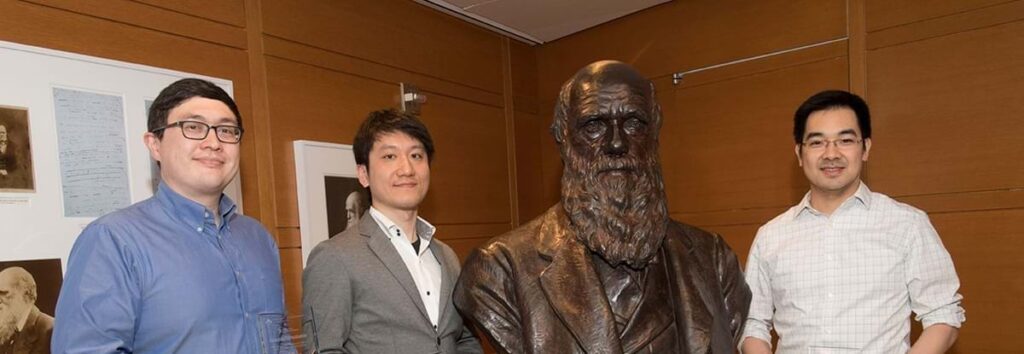
When a radiation oncologist, an immunologist, and a mechanical engineer teamed up during the 2018/2019 Interstellar Initiative, they pulled themselves out of an early failure. “During preliminary experiments, we found that our initial proposal wouldn’t have worked,” said Michael Pacold, MD, PhD, of New York University. Taisuke Kondo, PhD, of Keio University, elaborated: “The therapy we were proposing was potentially very dangerous because of adverse effects for normal lung tissues.”
The pair, and Edmond Young, PhD, of the University of Toronto, were looking for a research project in the field of pancreatic cancer. As they collaborated virtually, after their first in-person workshop, they settled on an alternative approach. They would study metabolic features of the disease that make it insensitive to therapies that can be effective against other types of cancer.
“This new approach makes for a more focused grant,” said Young. “We’re answering a basic question that could have major impact across the board in basic science. The Interstellar Initiative has been very helpful. The first workshop was a meet-and-greet, shaking hands and getting to know one another. Six months later we have met again to parse out further details and receive mentored feedback.”
Pacold summed things up: “In science you have to be comfortable with the realization that you will be wrong. Often. Don’t be afraid of being wrong, look at what the data is telling you and adjust accordingly.”
New Strategies to Restore Neuronal Function
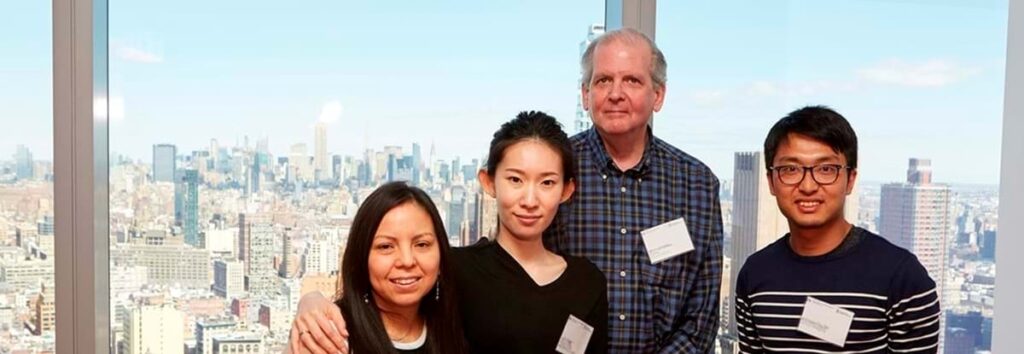
When Japanese physicist Kumiko Hayashi of Tohoku University and neuroscientist Ephraim Trakhtenberg of the University of Connecticut met during the 2017 Interstellar Initiative, the synergies between their work were not immediately obvious. Through the Interstellar Initiative program, they discovered common ground that led to an exciting new research proposal. Hayashi and Trakhtenberg aimed to devise new strategies to restore neuronal function following injury. As human cells mature, their ability to replicate is severely reduced. This phenomenon is especially prevalent in the brain, where the creation of new neurons exists only at very low levels in adulthood. Trakhtenberg’s work suggests that motor proteins may be involved in this loss. “If we can understand the dynamics of these proteins, we may be able to reverse the process,” he said., During the past several years, Hayashi developed novel algorithms that can be applied to motor protein measurement and analysis. “I don’t know much about neuroscience,” she said, “but it turns out that my algorithms can illuminate some mechanisms of the brain.” Using Hayashi’s algorithm and Trakhtenberg’s motor proteins expertise, the two hope to identify new therapeutic approaches that will help to increase the regeneration of neuronal function following injury.
Questions
Please email interstellar@nyas.org with any questions.
